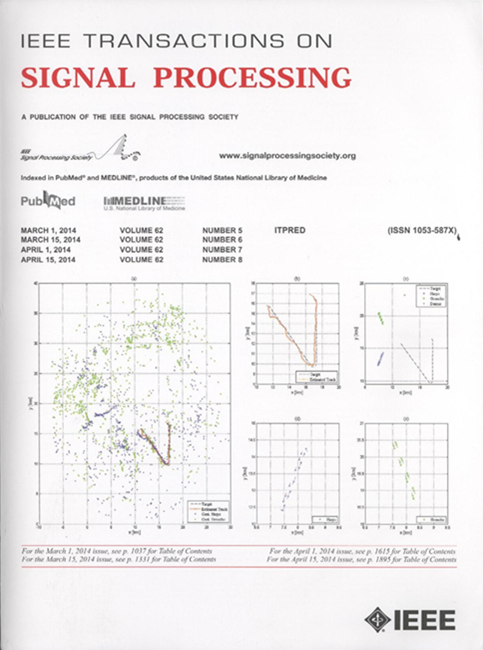An Adaptive Proximal Inexact Gradient Framework and Its Application to Per-Antenna Constrained Joint Beamforming and Compression Design
IF 5.8
2区 工程技术
Q1 ENGINEERING, ELECTRICAL & ELECTRONIC
引用次数: 0
Abstract
In this paper, we propose an adaptive proximal inexact gradient (APIG) framework for solving a class of nonsmooth composite optimization problems involving function and gradient errors. Unlike existing inexact proximal gradient methods, the proposed framework introduces a new line search condition that jointly adapts to function and gradient errors, enabling adaptive stepsize selection while maintaining theoretical guarantees. Specifically, we prove that the proposed framework achieves an自适应近端不精确梯度框架及其在单天线约束联合波束形成和压缩设计中的应用
在本文中,我们提出了一个自适应近端不精确梯度(APIG)框架来解决一类涉及函数和梯度误差的非光滑复合优化问题。与现有的不精确近端梯度方法不同,该框架引入了一种新的线搜索条件,该条件可联合适应函数和梯度误差,在保持理论保证的同时实现自适应步长选择。具体地说,我们证明了所提出的框架在$\mathcal{O}(\epsilon^{-2})$迭代中实现了$\epsilon$-平稳点,在$\mathcal{O}(\epsilon^{-1})$迭代中实现了$\epsilon$-最优解,在这种情况下匹配了最著名的复杂性。然后,我们将APIG框架定制应用于一个重要的信号处理问题:协同蜂窝网络中具有每天线功率约束(PAPCs)的联合波束形成和压缩问题(JBCP)。这种定制应用需要仔细利用问题的特殊结构,如半定松弛(SDR)的紧密性和对偶的可微性。数值实验表明,我们的定制应用程序的性能优于JBCP的最先进的基准测试。
本文章由计算机程序翻译,如有差异,请以英文原文为准。
求助全文
约1分钟内获得全文
求助全文
来源期刊

IEEE Transactions on Signal Processing
工程技术-工程:电子与电气
CiteScore
11.20
自引率
9.30%
发文量
310
审稿时长
3.0 months
期刊介绍:
The IEEE Transactions on Signal Processing covers novel theory, algorithms, performance analyses and applications of techniques for the processing, understanding, learning, retrieval, mining, and extraction of information from signals. The term “signal” includes, among others, audio, video, speech, image, communication, geophysical, sonar, radar, medical and musical signals. Examples of topics of interest include, but are not limited to, information processing and the theory and application of filtering, coding, transmitting, estimating, detecting, analyzing, recognizing, synthesizing, recording, and reproducing signals.
 求助内容:
求助内容: 应助结果提醒方式:
应助结果提醒方式:


